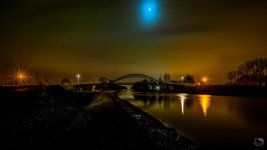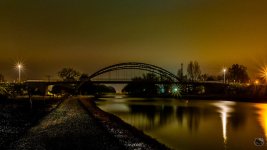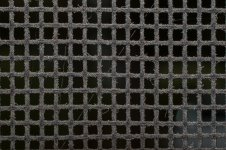You are using an out of date browser. It may not display this or other websites correctly.
You should upgrade or use an alternative browser.
You should upgrade or use an alternative browser.
Post your macro photos here
- Thread starter Marcel
- Start date
Invalid attachments on posts #1263 through #1265 wev
I think the server had too much to eat
AudiSportB5S4
Senior Member
Over the weekend I got a Tamron 90mm f/2.8 (135mm on my crop sensor D7100) macro lens.. Took some shots of corals in my reef tank.



I have a question though that I can't seem to understand the answers given to me.. What is the difference between me shooting this with the macro lens versus my zoom? (18-200). Over the weekend I took the same exact shot of the first coral with my zoom lens and definitely noticed a sharper image result from the macro, but what then gets me confused is this whole 1:1 reproduction ratio.. When I look at the repro ratio on my zoom @ 1:5, the image basically looks the same to me when I shot it with the macro and with my zoom so I'm confused with the difference. On another forum someone said I wasn't taking advantage of the macro capability with the pictures I posted but I got to basically the minimum focus distance of just under a foot and took a shot so I don't know what else there is to do



I have a question though that I can't seem to understand the answers given to me.. What is the difference between me shooting this with the macro lens versus my zoom? (18-200). Over the weekend I took the same exact shot of the first coral with my zoom lens and definitely noticed a sharper image result from the macro, but what then gets me confused is this whole 1:1 reproduction ratio.. When I look at the repro ratio on my zoom @ 1:5, the image basically looks the same to me when I shot it with the macro and with my zoom so I'm confused with the difference. On another forum someone said I wasn't taking advantage of the macro capability with the pictures I posted but I got to basically the minimum focus distance of just under a foot and took a shot so I don't know what else there is to do
If you compare the specs of the two lenses.
-----------------------------------------Tamron 90mm -----------Nikon 18-200mm
Max Magnification---------------------------------1 : 1----------------------0.22 to 1
Closest Focus distance ---------------------------0.29 m ----------------------0.5m
plus the field of focus is much flatter on a macro lens.
Thats it in a nutshell., macro lenses let you get closer and magnify up to 1 : 1 when measured on a FX sensor.
-----------------------------------------Tamron 90mm -----------Nikon 18-200mm
Max Magnification---------------------------------1 : 1----------------------0.22 to 1
Closest Focus distance ---------------------------0.29 m ----------------------0.5m
plus the field of focus is much flatter on a macro lens.
Thats it in a nutshell., macro lenses let you get closer and magnify up to 1 : 1 when measured on a FX sensor.
They're also 1:1 on a crop sensor but since some of them have more pixels/area it scales into a larger image.
Surely a macro lens designed for FX would be more than 1 :1 on a crop sensor, I thought the figures they quote are for FX unless the lens is specifically for DX then I guess they would quote for crop only.
Or am I missing something.
Surely a macro lens designed for FX would be more than 1 :1 on a crop sensor, I thought the figures they quote are for FX unless the lens is specifically for DX then I guess they would quote for crop only.
Or am I missing something.
Normally 1:1 stands for the size of the subject in reality being identical on your sensor at closest focus distance. If a bug is 1 cm and you are at max, it is also 1 cm on your sensor. That's true for FX and DX, or any length the lens has. But for DX, the higher megapixel sensors some have translate that same size into "bigger" when scaling on a computer.
If I use my 200mm on the DX or FX, the sizes remain identical yet the D3300 takes more magnified shots. In reality it doesn't.
The problem or advantage here is that on computers real world sizes don't matter and they're relative to your pixels count. Higher megapixels combined with smaller sensors translate into a perceived increase in magnification.
1:1 on DX or FX is a bit like this:


They're both identical shots lens-wise and real world/sensor-wise but because I saved the cropped version with the same pixel count, it looks as if it is magnified more.
Last edited:
AudiSportB5S4
Senior Member
The statement about the size of the object being 1:1 on your sensor is still what gets me.. If I take a picture of a coin with my macro lens @ MFD of 11.9" at a focal length of say 135mm (the 90mm on crop body), am I really going to see a difference in detail compared to me using my zoom lens at it's MFD of 1.6 feet and just zooming in more to match the composition of the shot taken with the macro?
I definitely notice a difference in the depth of field and what's in/out of focus with the lens.
I definitely notice a difference in the depth of field and what's in/out of focus with the lens.
I don't think your zoom will reach 1:1. I used my 70-300mm before my macro and it didn't get that same magnification. It was also very impractical since your shooting angles are very limited and you need binoculars to see the bugs. But it gets your some closer. Focal length is of little importance, magnification is. An 800mm will not get more magnification than your macro no matter how hard you try to zoom in. Zoom ratio is of no importance since that is not the same as magnification ratio.
For DoF it shouldn't matter much since length is irrelevant to it. At 1:1 a 40mm has the same DoF as a 200mm.
For DoF it shouldn't matter much since length is irrelevant to it. At 1:1 a 40mm has the same DoF as a 200mm.
Last edited:
Macro lens allows a closer focus distance so you can crop in camera and achieve more detail. If you are not focusing closer than a non macro lens, there is no benefit to using a macro lens.
A cropped shot from a non macro lens will lose detail and sharpness as it is enlarged compared to a true macro shot.
A cropped shot from a non macro lens will lose detail and sharpness as it is enlarged compared to a true macro shot.
The statement about the size of the object being 1:1 on your sensor is still what gets me.. If I take a picture of a coin with my macro lens @ MFD of 11.9" at a focal length of say 135mm (the 90mm on crop body), am I really going to see a difference in detail compared to me using my zoom lens at it's MFD of 1.6 feet and just zooming in more to match the composition of the shot taken with the macro?
I definitely notice a difference in the depth of field and what's in/out of focus with the lens.
The only time the lens is at 1:1 is when it is focused at the closest focus distance like this image of a screen door:

So, 1mm of the subject is represented by 1mm on the sensor. If I printed this image on transparency at a size of 23.2mm wide (same as the sensor), and laid the transparency on the screen, the wires would line up exactly.
AudiSportB5S4
Senior Member
^ Ah okay, makes more sense now. So really macro lenses flex their capability only at their minimum focus distances.. After that it becomes just any other lens more or less and will only show differences in the bokeh and the overall sharpness of the pictures that the lens can produce that may or may not be better than a non macro lens..?

